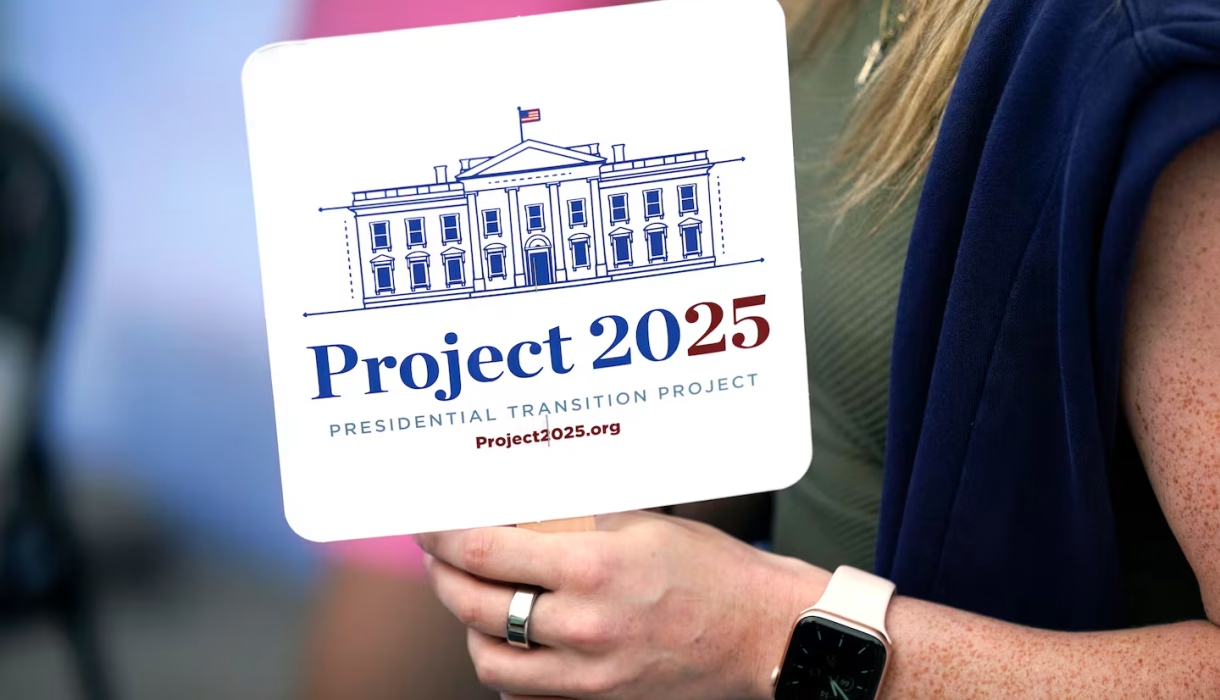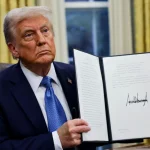
Project 2025 and the Struggle for the Soul of American Democracy
Posted in :
As the United States approaches another pivotal election cycle, a shadow strategy is quietly gaining ground within the conservative movement—one with the power to reshape the very structure of government as we know it. Spearheaded by the Heritage Foundation, Project 2025 is not just a set of policy goals or electoral talking points. It is, in many ways, a comprehensive blueprint for radical transformation, designed to centralize power, strip back regulatory protections, and redefine the role of federal institutions.
Launched in 2022, Project 2025 emerged from a moment of division and discontent on the political right. The initiative aims to build a unified conservative governing machine, preparing for the potential return of Donald Trump—or a Trump-aligned successor—to the presidency. The project’s strategy is methodical: create an ultra-loyal federal bureaucracy, dismantle long-standing protections, and eliminate obstacles that slowed Trump’s first term. This is no hypothetical playbook. It is a living, breathing framework with policy agendas, personnel databases, training academies, and a “day one” emergency plan for immediate action upon entering office.
At the heart of this movement lies a key objective: concentrate power in the hands of the executive branch, neutralizing the checks and balances that define American democracy. Under the plan, as many as 4,000 political appointments would be filled by vetted loyalists. These individuals, chosen not for competence or independence but for ideological purity, would be installed across the government to enact Project 2025’s sweeping agenda.
That agenda, laid out in the “Mandate for Leadership 2025”, reads like a wishlist for cultural reactionaries and hardline libertarians. Proposals include ending no-fault divorce laws, repealing the Affordable Care Act, slashing Social Security and Medicare, imposing a nationwide abortion ban without exceptions, restricting public education content related to gender identity and sexuality, and defunding major federal agencies such as the Department of Education and the Environmental Protection Agency. These are not tweaks to governance—they are efforts to restructure American society.
The vision animating Project 2025 is not new, but it is newly organized. It is driven by a belief that American pluralism, diversity, and institutional independence are problems to be corrected, not values to be preserved. Historian Thomas Zimmer has referred to the project as a “declaration of war on a pluralistic society.” It is not an exaggeration. It is a stark description of what’s unfolding: a methodical attempt to roll back decades of social, civil, and environmental progress under the guise of restoring order and tradition.
A key pillar of the initiative is the Presidential Administration Academy, a training program that seeks to mold future appointees in the image of Project 2025’s values. It’s a classroom for ideological warriors—not public servants—designed to ensure loyalty, not objectivity. Meanwhile, the project’s policy authors are already drafting executive orders and legal strategies to bypass legislative gridlock. They understand that control of the presidency means control of the bureaucracy—and they are preparing to seize that power with speed and precision.
For those who lived through the last Trump administration, some of this may feel familiar. But the ambition here is far greater. Where Trump’s first term was marked by chaos and institutional resistance, Project 2025 is built to remove that resistance altogether. In its own literature, the Heritage Foundation explicitly states that the next conservative administration must “demolish the deep state.” That demolition, however, comes with enormous collateral damage—particularly for marginalized communities, civil servants, and anyone who values the impartial application of federal law.
The implications are profound. A nationwide abortion ban would effectively overturn state-level protections and criminalize healthcare decisions. Cuts to Medicare and Social Security would undermine lifelines for millions of seniors and disabled Americans. The dismantling of environmental regulations would roll back decades of protections during a time of climate crisis. These are not abstract shifts—they are tangible, everyday threats to stability, safety, and dignity.
As this agenda gains traction, a broader question emerges: where is the public? While Project 2025 operates behind closed doors, there is a rising tide of civic awareness and engagement pushing back. Rallies organized by progressive leaders like Bernie Sanders and Alexandria Ocasio-Cortez have drawn massive crowds. Activists and watchdog groups are beginning to spotlight the initiative’s goals, warning of the implications for civil liberties, bodily autonomy, and democratic institutions.
But the fight is uphill. The public discourse remains fragmented, and the conservative messaging machine is skilled at framing radical change as common sense governance. Concepts like “limited government” and “traditional values” mask what is, in reality, a strategic consolidation of state power in the service of a narrow ideological vision.
This brings us to Donald Trump himself. While he has kept public distance from Project 2025, his policy record and political instincts align with its core tenets. He is referenced over 300 times in the initiative’s planning documents, and many of its authors held key positions in his previous administration. The separation is more cosmetic than meaningful. Trump, or someone molded in his image, is clearly the intended vehicle for the plan.
Not all conservatives support the initiative. Some fear that its heavy-handed approach and extreme proposals could alienate moderate voters. Others question whether such a top-down overhaul is compatible with the constitutional traditions of the party. But among many within the Republican apparatus, Project 2025 is seen as the solution to the perceived failures of Trump’s first term—a way to ensure that this time, nothing slows the movement down.
So what do we do?
First, we must stay informed. Understanding the scope and structure of Project 2025 is critical. This is not a conspiracy theory—it is an openly stated strategy, outlined in hundreds of pages of public documentation. Second, we must engage. That means supporting journalists, civic educators, advocacy organizations, and candidates who are fighting to preserve democratic norms. Third, we must vote. And not just every four years. Local elections, judicial appointments, school boards—these matter more now than ever.
Project 2025 is a plan. It is ambitious, detailed, and dangerous. But plans can be disrupted. Through civic engagement, public pressure, and sustained resistance, Americans have the power to choose another path. The future is not inevitable. It is shaped by action—or inaction.
Let history record not that we were surprised by what happened—but that we were prepared to confront it.

